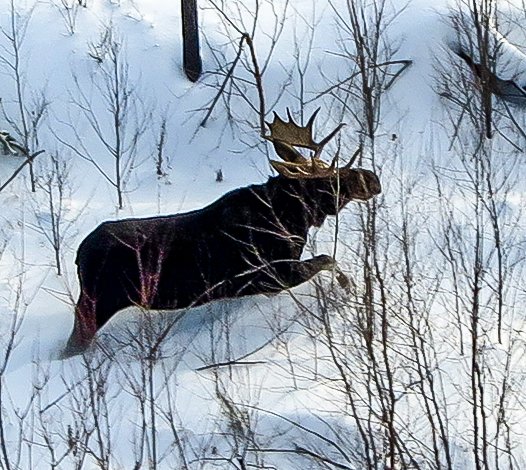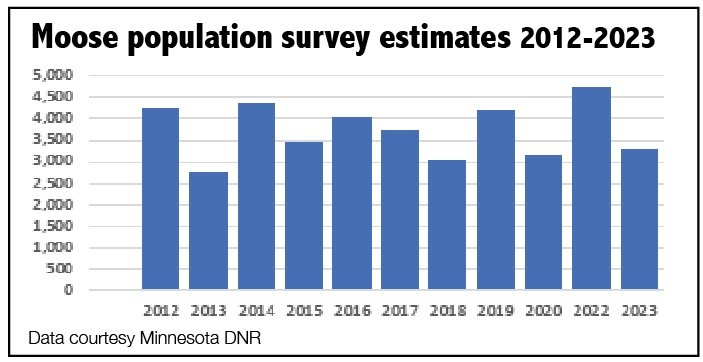Support the Timberjay by making a donation.
Latest moose survey shows stable population
REGIONAL— There is more evidence of stability in the northeastern Minnesota moose population even as the Department of Natural Resource’s latest estimate of 3,290 moose marks a …
This item is available in full to subscribers.
Attention subscribers
To continue reading, you will need to either log in to your subscriber account, or purchase a new subscription.
If you are a current print subscriber, you can set up a free website account and connect your subscription to it by clicking here.
If you are a digital subscriber with an active, online-only subscription then you already have an account here. Just reset your password if you've not yet logged in to your account on this new site.
Otherwise, click here to view your options for subscribing.
Please log in to continue |
Latest moose survey shows stable population
REGIONAL— There is more evidence of stability in the northeastern Minnesota moose population even as the Department of Natural Resource’s latest estimate of 3,290 moose marks a substantial decline from the estimate of 4,700 moose last year. The latest estimate comes following the completion of the 2023 aerial moose survey earlier this winter.
Spotters located a total of 267 moose across 53 sample plots flown by aircraft over a ten-day period in late January, which was down from the 373 moose sighted during last year’s survey.
The raw number provides only a starting point, however, as DNR researchers use several factors to develop a modeled estimate of the population. That estimate has varied considerably over the past decade but has shown no upward or downward trend.
Although survey results suggest a decrease in the moose population from 2022 to 2023, those estimates are better used to understand long-term trends. Factors such as visibility of moose from the air, challenging weather conditions and moose avoidance of aircraft create moderately high sampling uncertainty. This year’s greater than average snow depth during the period of the survey may have pushed moose into heavier cover, where they are less visible to aerial spotters. Indeed, according to DNR biometrician John Giudice, who drafted the survey report, moose did appear to be more associated with visual screening, such as heavy conifer cover, than usual. The effects of that variable are supposed to be factored into the modeling, but it undoubtedly adds to the uncertainty of the resulting data. That uncertainty makes it difficult for researchers to make confident statements about the magnitude of population changes unless those changes are relatively large and occur consistently over time.
But data collected recently by researchers with the Grand Portage Band of Lake Superior Chippewa suggest the magnitude of this year’s decline could be more than an artifact of sampling. They have reported high mortality rates on collared moose and similar decreases in aerial surveys around Grand Portage and Isle Royale. Continued comparisons in coming years will help answer that question.
The 2023 DNR survey results showed that calves comprised an estimated 16 percent of the population and the estimated calf-cow ratio was 38 calves per 100 cows. Those estimates are slightly lower than last year’s figures but are comparable to values observed during the last 10 years, especially considering moderate-to-high levels of sampling uncertainty. Both factors are key indicators of reproductive success.
While estimates suggest continued stability in the population and reproductive success, DNR researchers point out that Minnesota moose remain at risk given long-term trends.
Both the Fond du Lac Band of Lake Superior Chippewa and the 1854 Treaty Authority contributed funding and personnel for the 2023 annual survey. The survey is available on the DNR’s moose management page (mndnr.gov/moose).









